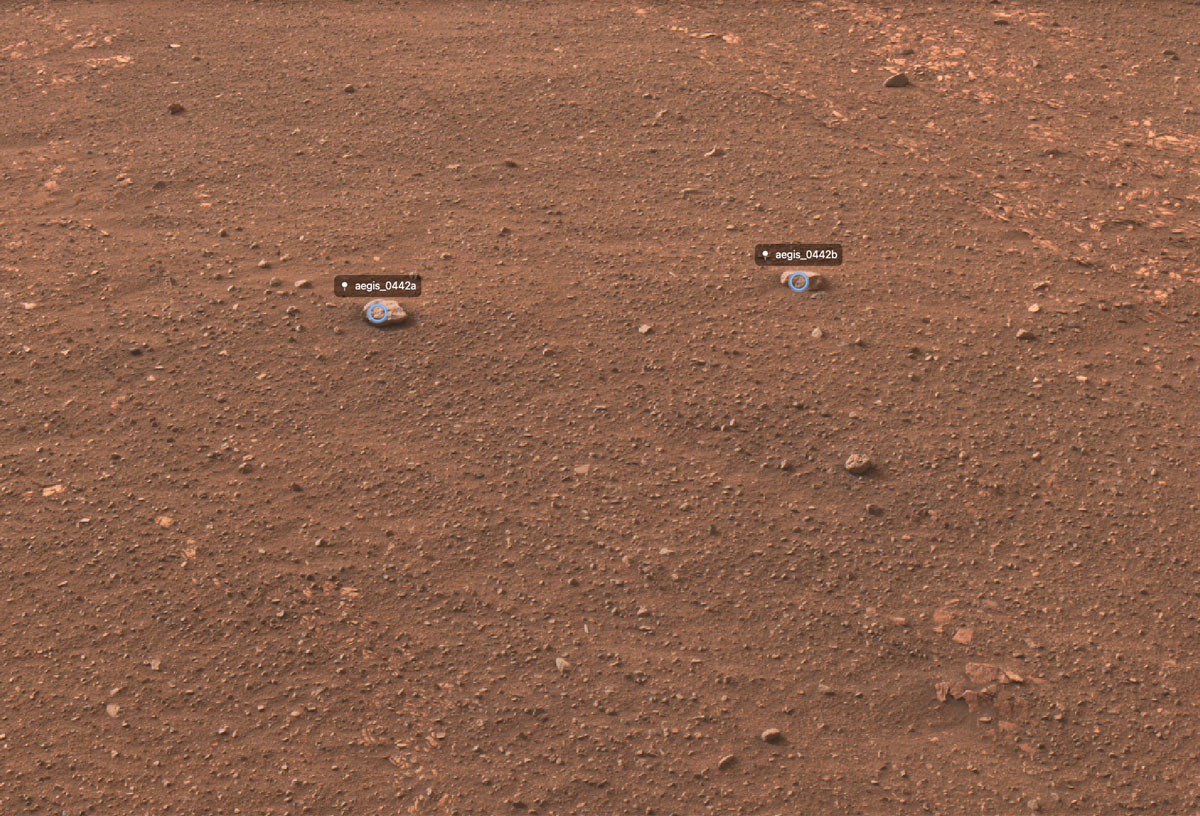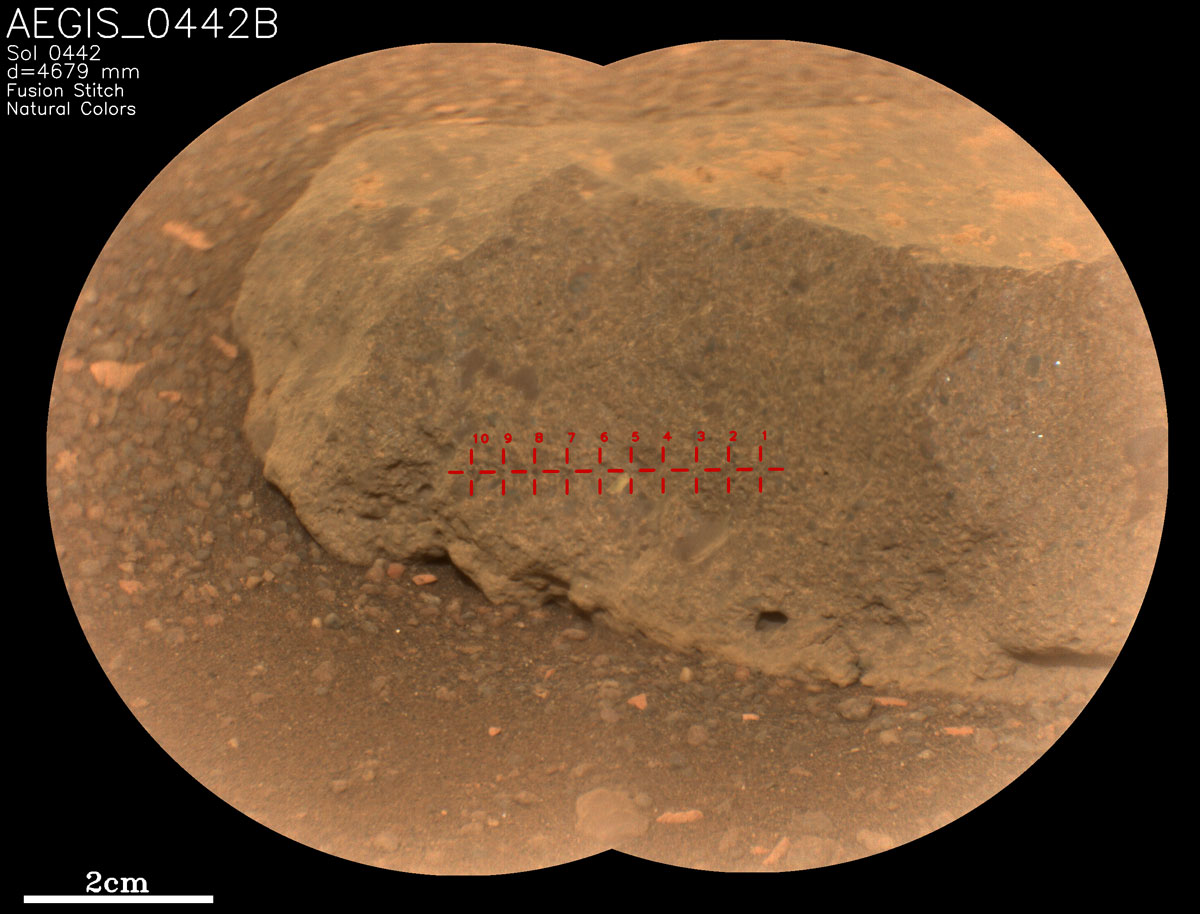3 min read

Perseverance has continued into Hawksbill Gap, making remote sensing observations of small portions of outcropping rock layers in search of a good place to collect a sample. Since Perseverance is in the Shenandoah quadrangle, we are using target names from Shenandoah National Park. Some of the names this past week included “Bald_Face_Mountain,” “Little_Devil_Stairs,” “Sunset_Hill,” “Luck_Hollow,” and “Moody_Creek.” Perseverance logged nearly 400 meters of driving progress for the week of May 15-21, accumulating a total distance since landing of over 11.8 km as of Sol 446.

In another first, Perseverance selected two targets on Sol 442 and shot them with the SuperCam laser to determine their elemental compositions. Note that it was the rover itself that picked the targets, not the operations team. Normally, when the rover team picks the targets, the observations are not made until the following day. If Perseverance picks its own targets, it can shoot them right after a drive, many hours before the rover team back on Earth has time to receive and analyze the Navcam images from the rover’s new location and select targets. Having the SuperCam results right away can alert the team to unusual compositions in time to make decisions about further analyses before the rover moves on. The software package that enables this target selection is called Autonomous Exploration for Gathering Increased Science, or AEGIS, and was developed at JPL for previous rover missions and adapted for SuperCam on Perseverance. AEGIS requests Navcam images to be taken, and it then analyzes the images to find rocks and prioritize them for analysis based on size, brightness, and several other features. It subsequently initiates a sequence in which SuperCam fires its laser to determine the chemical makeup of one or two top priority targets selected from the Navcam images. AEGIS testing on Perseverance started in March by collecting SuperCam Remote Micro-Imager (RMI) images but not firing the laser. After tweaking several parameters on successive tests, the laser was used by AEGIS for the first time last week. The accompanying images show the rocks that were selected and shot. RMI images were taken after the laser shots to indicate where the laser fired. The Perseverance team plans to use AEGIS frequently from now on to provide more rapid data on the composition of rocks around the rover’s path.
Written by Roger Wiens, Principal Investigator, SuperCam / Co-Investigator, SHERLOC instrument at Purdue University







